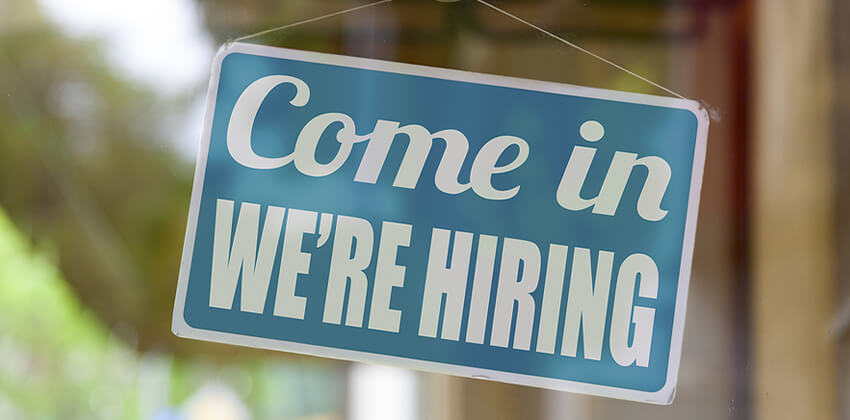
You know the date you became unemployed, got married or divorced, had a child, moved across the country, or lost a loved one.
These life occurrences mark significant change.
And whether they were welcomed or unwelcomed, the reality is this: you will never be the same person you were before that event occurred.
Transition follows change.
Best known for his expertise on dealing with change, and the author of several books including Transitions: Making Sense of Life’s Changes, Dr. William Bridges puts it this way:
“Transition is not just a nice way to say change. It is the inner process through which people come to terms with change, as they let go of the way things used to be and reorient themselves to the way that things are now.”
So, even if you desperately wanted your first child, and no matter how excited you were about her birth, you must come to terms with what her arrival changes for you. Who are you as a mother or father? What must you let go of now that you have responsibility for a child? What must you embrace? How will your life be different?
The change is your daughter’s arrival; the transition is the process of letting go of who you were before she arrived, so you can begin a new life chapter called, “parent,” and embrace the joys and challenges that brings.
Unlike change, which happens swiftly, transition happens slowly, over time.
The Transition Stages
While the five stages of grieving (denial, anger, bargaining, depression, and acceptance) pioneered by Dr. Elizabeth Kubler-Ross have application for the emotional stages people in any significant loss situation go through, it is the stages of transition, developed by Dr. Bridges, which hold the power for understanding job loss recovery. Bridges’ transition framework includes three stages:
- Ending, Losing, Letting Go
- The Neutral Zone
- The New Beginning
What Does “Letting Go” Mean?
Endings can be difficult. There’s the shock, the worry, the anger.
Since job loss is loss, the five signs of grieving (noted above) are common to experience.
Also common is fear.
You’ve come to know yourself in a particular way through the employer you worked for, the job you had, and the people you worked around.
When that job ends, it shatters your identity and your grounding.
That identity loss can be frightening, and the resulting pain can linger like smoldering coals.
People tell you, “just get over it.”
But, the transition that happens due to job loss is not something you “get over.” It is something you evolve through. That evolution begins when you let go.
We all know people who can’t let go. They’re often angry and bitter and stuck as victims in their own lives.
As long as you hold onto the way things were, you will not be able to move on — to what is, or what could be.
It’s not your identity or your past experiences you’re letting go of, it’s the wishful thinking that you want to go back to the way things were, that you don’t want this change for your life. But things can’t go back.
It’s when you realize that things are not ever going to be the way they were that you let go.
And when you let go, you step forward on your path into the neutral zone, which sometimes feels like the “twilight zone.”
That Critical Zone
The Neutral Zone is that in-between time, often filled with chaos, anxiety, conflict, and a sense of feeling lost. It can be painful, confusing, and challenging.
It’s the interval between the old and the not-yet-new. It can be a time of profound reflection, learning, and growth. This is where your new identity begins to take shape.
Here’s an example from my life:
Leaving by choice a successful corporate career to pursue a life-dream to live and write from the mountains of Montana a few years ago, I was blindsided by this neutral zone process of inner work. Having dreamed about and planned the change for years, I expected a light switch going from one to the other. Instead, I stayed stuck in this stage for months, not ready to let go of who I had been, or process the empty feelings I had without that title and the trappings that came with it. It was a painful, and significant growth time to discover that what I do is not who I am.
The Way Through
The bridge to your successful future must pass through inner work. And it can’t be hurried. Accept that it takes whatever time it takes to redefine yourself by incorporating the change (what ended) into your life, to release the wounds from that ending and work through the emotional baggage, and to stop resisting a journey that transforms who you are.
Transitions are triggered by change, and there’s no way to avoid them. Your new beginning may be around that corner, but you’ll have a hard time successfully grasping it without building a transition bridge by letting go and “coming to terms” with what has happened in your life.
More About Recovering from Job Loss:
- 3 Tracks to Accelerate Your Recovery from Job Loss
- Reclaiming Career Prosperity
- Job Loss Questions for Career Success
- Handling Job Loss Worries
- 4 Things to Know About Your Job Loss
- We ALL Need Help Sometimes
- 7 Steps to Restart Your Job Search Momentum
- How to Get Your Job Search Unstuck
- 3 Evergreen Keys to Job Loss Recovery
- Beating the Job Search Blues
About this author…
Job Loss Recovery Expert Nan S. Russell discovered a Stanford degree didn’t protect her from being fired from her first professional job. From minimum wage to Vice President of a multi-billion dollar company, she learned the hard way. Now she helps others with what does and doesn’t work at work. The author of three career books including, The Titleless Leader, Hitting Your Stride, and Nibble Your Way to Success, Nan is a national speaker and work issues consultant. More at NanRussell.com; and her job loss seminar: Rebooting After Job Loss.
Don't forget to share this article with friends!





